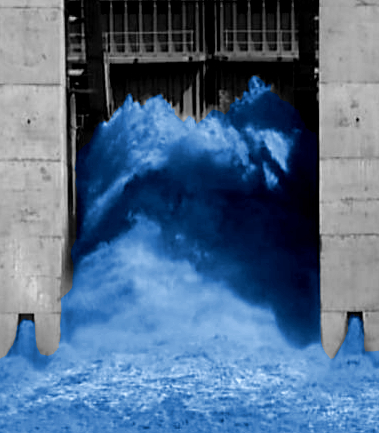Sunwater's warning slammed
 An expert review has accused Central Queensland utility Sunwater of failing to warn downstream residents before it released massive amounts of water from Callide Dam during a cyclone early last year.
An expert review has accused Central Queensland utility Sunwater of failing to warn downstream residents before it released massive amounts of water from Callide Dam during a cyclone early last year.
The assessment comes in a review ordered by Premier Annastacia Palaszczuk, who called in the inspector-general of emergency management to check residents' complaints that the dam was too full, and was forced to dump water into downstream areas.
Homes, businesses and even a local school suffered heavy flood damage when the dam water was released, but residents say they had little or no warning of what was on the way.
Some claim they had no time to protect their homes, stock, or to evacuate safely.
The inspector-general’s review commissioned an independent hydrologist to undertake a technical assessment.
The report concluded that “regardless of how Callide Dam was operated during the February 2015 event, the communities along the Callide Valley would still have experienced a major flood.”
But the hydrologist’s models concluded that the effect on flood levels in Jambin and Goovigen would have been minimal if things had happened differently, such as the gates being manually operated.
The hydrology report confirmed that SunWater’s Emergency Action Plan (EAP) was followed, but that the tools SunWater uses to carry out flood forecasting are inadequate.
As a result, the likelihood of the dam gates atomically opening could have been predicted earlier had the storage estimates been accurate, or based on more robust modelling tools.
The review also found that the availability of information to the public could have made a difference to community preparedness.
SunWater believed for days prior to the cyclone that Callide and Kroombit Dams were likely to spill, and shared this belief with the Local Disaster Management Group (LDMG), but it was some time before the public were subsequently informed.
The hydrologist’s assessment says SunWater’s computer modelling was incorrect, yet even this imperfect information could have provided more accurate community warnings.
Though considered by SunWater staff, early advice of the potential for the dam to spill was not progressed to the public, because SunWater waited for the EAP activation.
A SunWater operator told the review that thought they heard the gates opening between 8.37pm and 8.42pm, and the first warning for the Callide Dam issued by SunWater was at 8.39pm.
Shortly thereafter (at 8.48pm), the Local Disaster Coordination Centre (LDCC) requested an Emergency Alert warning message be sent out, but there was trouble with the maps used, and the alert was not sent until around an hour later at 9.40pm.
“We consider that the timing of these alerts in relation to the opening of the dam gates and the magnitude of the event could have been considerably reduced,” the review states.







 Print
Print